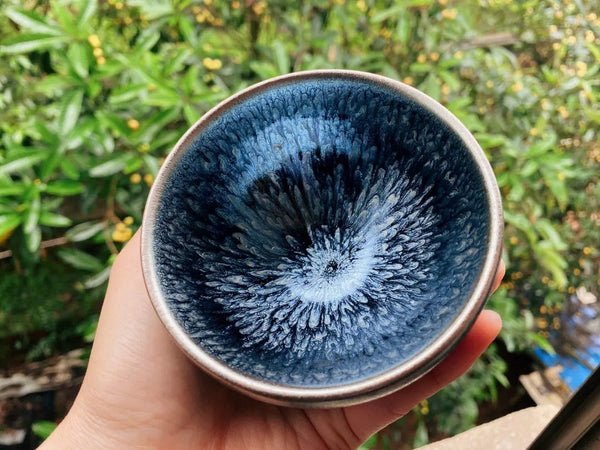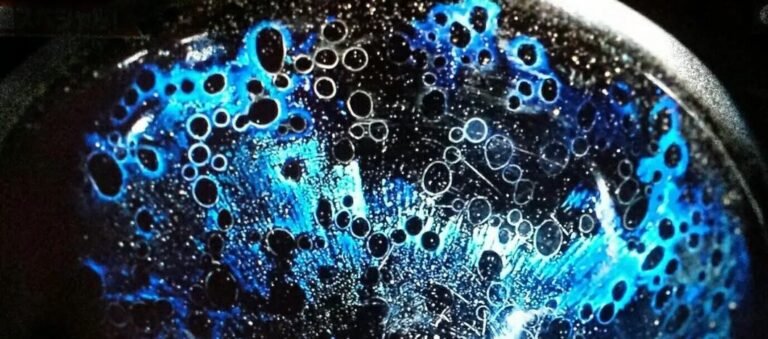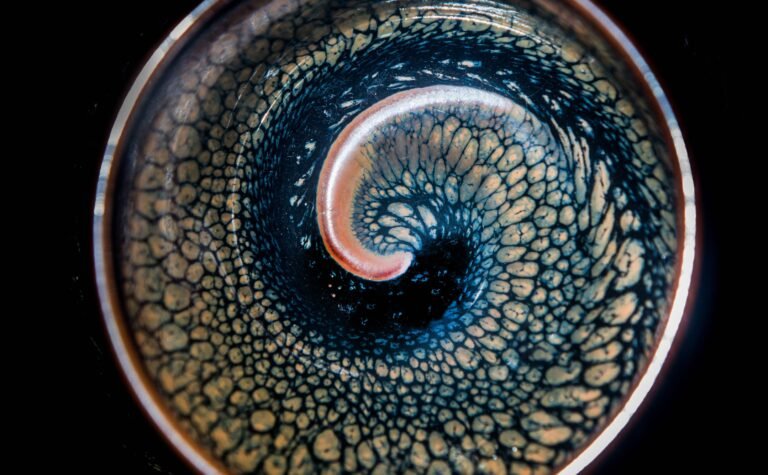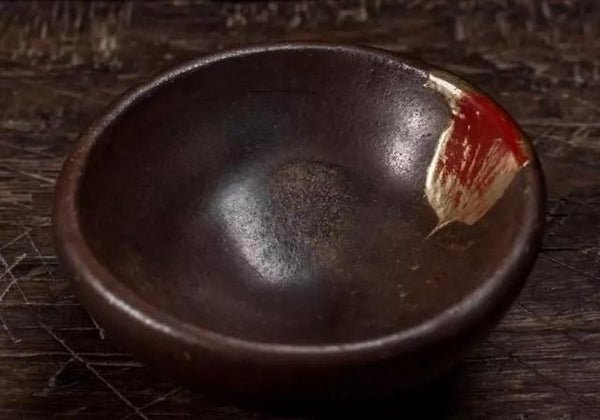Caring for a Jianzhan is one of the unique joys this ceramic ware brings to tea lovers. Many Jianzhan enthusiasts dedicate themselves to nurturing the stunning “seven-color glow” (a iridescent sheen) that Jianzhan can develop over time. Recently, a host of questions have popped up online: “Which type of Jianzhan is easier to care for?” and “How do I nurture the seven-color glow?” Before diving into these, however, it’s essential to first understand the “three key pitfalls to avoid” in Jianzhan care. What exactly are these pitfalls? Let’s break them down.
Don’t “Cut Corners” on Selection: Choose the Right Jianzhan First
To nurture a brilliant “rainbow aura” (the seven-color glow), there’s a critical step you simply can’t skip: selecting the right Jianzhan.
A common saying in the Jianzhan community goes: “Most hare’s fur Jianzhan and a small number of oil spot Jianzhan are harder to nurture into showing the desired rainbow aura.” While these pieces are trickier to care for and less likely to reveal their luster easily, it’s not impossible—just more demanding. Generally speaking, Jianzhan with a fully formed vitrified protective layer and a strong mirror-like finish are far harder to nurture into developing the rainbow aura.
If you want to cultivate the seven-color glow in a relatively short time, opt for Jianzhan with active crystalline glazes. For example, some oil spot Jianzhan—those with distinct crystalline textures and lively glaze activity—are much easier to bring to their full luster. In short, aim for Jianzhan with moderate vitrification.
Why moderate? Jianzhan with weak vitrification (or those that were over-fired) will never develop the seven-color glow; over time, they may even turn rust-colored. On the other end, Jianzhan with excessive vitrification absorb tea slowly, making them extremely difficult to nurture.
How to spot Jianzhan with active crystals? Run your hand lightly over the glaze—you’ll feel a subtle unevenness. Under a magnifying glass, you’ll clearly see crystalline formations. These are your best bets for nurturing that coveted glow.
The bottom line: If you pick a Jianzhan that’s inherently hard to nurture (or incapable of developing the glow) from the start, no amount of effort later will help it reveal its brilliance. That said, even these pieces will grow smoother and more vibrant with consistent care over time—just not in the form of the seven-color glow.
Don’t Rush: Patience Is Key to Nurturing
“Nurturing a Jianzhan” requires patience; rush it, and you’ll end up doing twice the work for half the result.
Take the so-called “lazy nurturing method” some enthusiasts use: skipping cleaning in the name of “letting the tea seep in.” Over time, this approach will only harm your precious Jianzhan. If you stick to this lazy routine long-term, two things will happen: the glaze will grow dry and dull, and the crystals (which give Jianzhan its charm) will gradually lose their luster. You’ll be left with a Jianzhan marked by obvious tea stains on the inner glaze and a lackluster appearance—far from the glow you want.
Instead, follow these steps:
- Clean promptly after use: Right after finishing your tea, clean the Jianzhan. Use a dedicated tea cloth to wipe it dry, then let it air out naturally.
- Give it “rest time”: Jianzhan need breaks too. Using it intermittently yields better results. Try rotating between 2–3 Jianzhan; this lets each piece’s glaze dry out completely between uses, creating ideal conditions for nurturing.
There’s no shortcut to nurturing a Jianzhan—patience is non-negotiable.
Don’t “Waste” It: Avoid Neglecting Cleanliness
Some Jianzhan lovers hold a misconception: “If I don’t wash the Jianzhan after use, or leave it soaking in tea soup, it’ll be easier to bring out its glow.” This is completely wrong.
After every use, your Jianzhan must be free of leftover tea; keeping it clean is the cornerstone of successful nurturing.
While Jianzhan’s iron-rich clay has natural properties that help preserve tea and resist corrosion, leaving tea in it overnight is extremely damaging to the glaze. Worse, this habit is unhygienic and can even harm your health (mold or bacteria may grow in stagnant tea).
The correct practice? Use your Jianzhan regularly for tea, but keep it clean with consistent care:
- After your last cup of tea each day, rinse the Jianzhan with hot water to flush out residue.
- Wash it thoroughly (use only clean water—no soap!) as you normally would.
- Place it in a well-ventilated area to air dry completely before storing or using it again.
Nurturing a Jianzhan isn’t about “tricks”—it’s about avoiding these three pitfalls, choosing wisely, and committing to gentle, consistent care. Over time, your Jianzhan will reward you—not just with the seven-color glow (if it’s suited to it), but with a unique patina that tells the story of every cup of tea you shared.



